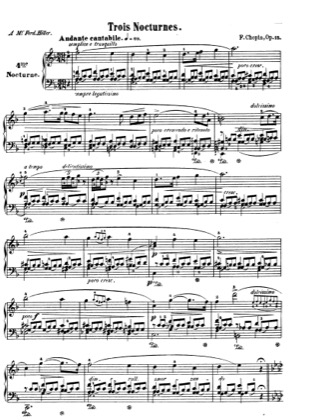

These two models did not represent ‘either/or’ propositions: each opus also contains works whose experimental aspects complicate their classification.Ĭhopin included the Op 9 set among the first works he published upon his arrival in Paris. But these nocturnes also engaged keenly with Field’s pianistic vision of the genre, at times emulating it, but elsewhere staking out an alternative model-one that Robert Schumann in particular would link specifically to Chopin. Vocality stands to the fore in Chopin’s first two published sets of nocturnes, each containing three works. However immeasurably Chopin broadened the expressive purview of the genre from its origins in pleasant sociability, he never lost sight of its essential vocal qualities. Every composer and performer of piano nocturnes in the first half of the nineteenth century grasped their rootedness in song: they all strove to make the piano ‘sing’, and (aided by developments in pedal technology and technique) to distinguish a lyrical ‘voice’ from a supporting accompaniment.


When the title appeared on works for solo piano (John Field, an Irish composer resident in Russia, probably started this practice around 1811), little changed generically: piano nocturnes were no less ‘songs’ for lacking words. Across Great Britain and Europe in the first half of the nineteenth century, the title ‘nocturne’ was most commonly attached to a kind of vocal piece, most often a duet, performed among family or friends to enliven an evening gathering (hence the name).


 0 kommentar(er)
0 kommentar(er)
